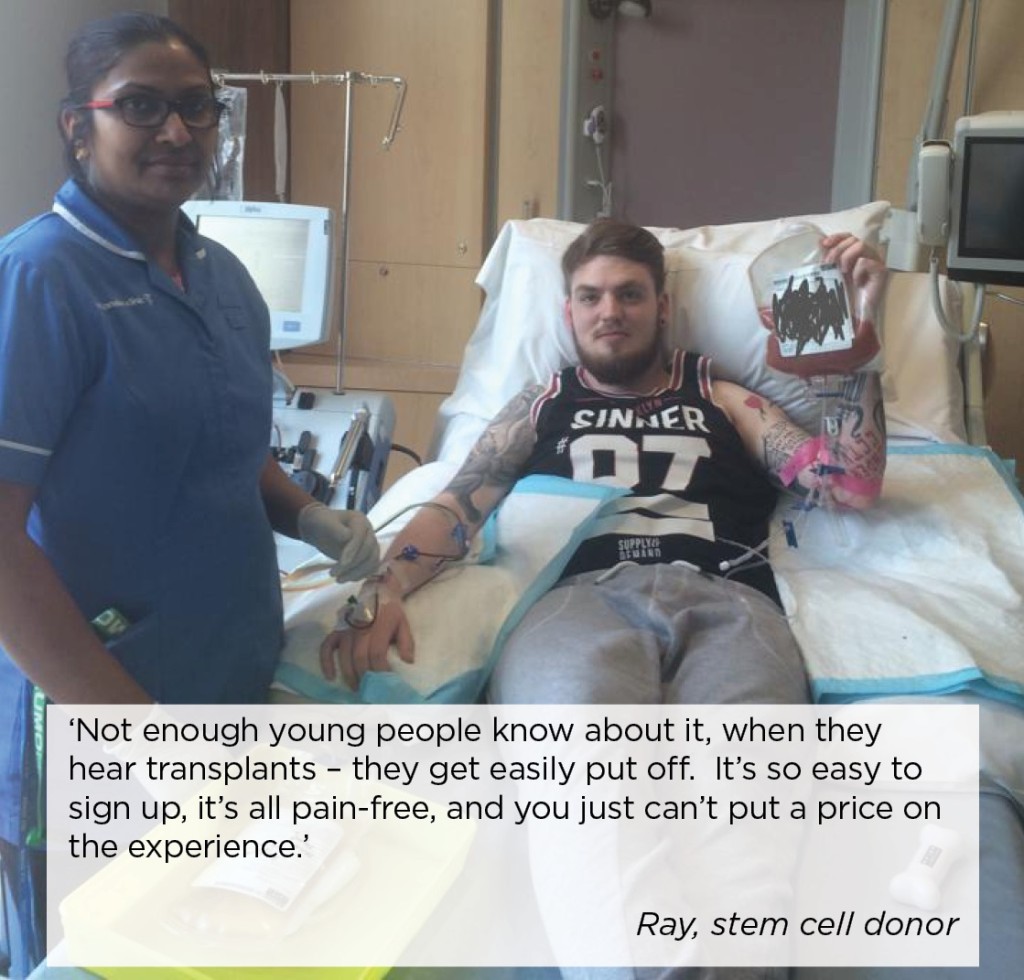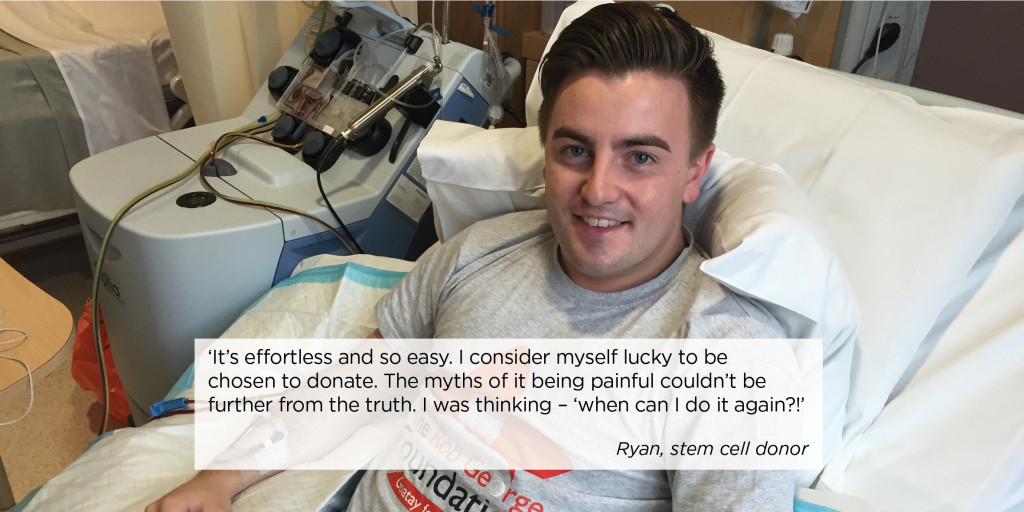Jon is a Copywriter at Anthony Nolan; most recently, he's been working on our #DonatingIsntScary campaign, aimed to bust myths about stem cell donation.
In today's blog, he talks about his own experiences as a supporter, and why it's so important to challenge the perception that donating is something to be afraid of.
The most famous fictional depiction of stem cell donation is, quite literally, the stuff of horror movies. It appears in the 2007 movie Seven Pounds. (And if you haven’t seen it, spoilers!)
In the film, Will Smith’s character – who’s punishing himself for his responsibility in a traffic accident he caused years ago – decides to donate his bone marrow to a little boy, who needs a lifesaving transplant.
Will is then shown lying on his stomach, screaming in unimaginable pain as a doctor calmly drills into his hip from behind.
‘No anaesthetic!’ the doctor says, shaking his head. ‘You’re a brave guy.’
Never mind that this procedure would never take place like this, without anaesthetic.
Or that Will would need to be matched with a patient based on a compatible HLA-type, instead of deciding out of the blue that he’d like to be a donor.
Or that 9 times out of 10, donation no longer needs to involve the bone marrow at all.
It’s just a ridiculous scene, with zero relation to reality. It depicts stem cell donation not as an act of decency and kindness, but the morbid choice of a man trying to hurt himself in the worst way he possibly can. And sadly, it appears in a movie that made more than $168 million at the box office and was seen by millions of people worldwide.

As a writer and editor at Anthony Nolan, I’m lucky enough to be able to speak to a lot of donors – both those who donate via peripheral blood stem cell donation (PBSC) and those who donate via their bone marrow itself.
And what stands out, more than anything, is just how many donors (both kinds) say they want to donate again. ‘Without a doubt.’ ‘In a heartbeat.’ ‘A million times over.’
And they’re usually astonished, too, to hear that a lot of people consider it a serious, extremely painful procedure. Because they’ve experienced the reality for themselves, and they didn’t even consider it a major hassle, let alone an ordeal.

And then there’s the other side of it. As a supporter of Anthony Nolan (and as someone who’s on the register), I go home in the evening and I find myself talking to friends or family members who’ve barely heard about stem cell donation – and if they have heard anything, it’s only the myths.
Big needles. Drills. Absolute agony.
It’s a huge problem for us. And if you’re a supporter of our work, you’ve probably experienced it as well. In 2011, we ran a survey that showed 31% of people were afraid that donating would be painful; 9% were scared that it might endanger their health. And as a result, almost 20% said they wouldn’t even consider signing up to the register.

We’re working hard to change those attitudes – which is why we launched our #DonatingIsntScary campaign this October, featuring stories from both stem cell and bone marrow donors, and a short animated film created by Bournemouth University students.
Progress is gradual. Sometimes it’s frustrating. As a charity, we can keep putting the truth out there, but there are still vast swathes of the population who we just can’t reach.
And there’ll always be the occasional movie or TV show that uses bone marrow donation as the focus of a grisly scene, and ends up spreading confusion as a result.
So we need to take action as individuals. All of us who care about the lifesaving possibilities of stem cell donation – if we’ve donated, if we’re on the register, if we know someone who needs a transplant – need to make sure we’re actively working to change the conversation.
#DonatingIsntScary is just the start of that. If you’d like to help, then please do join us on Twitter and start spreading the word.
Together, let’s make Halloween just a little less frightening.
